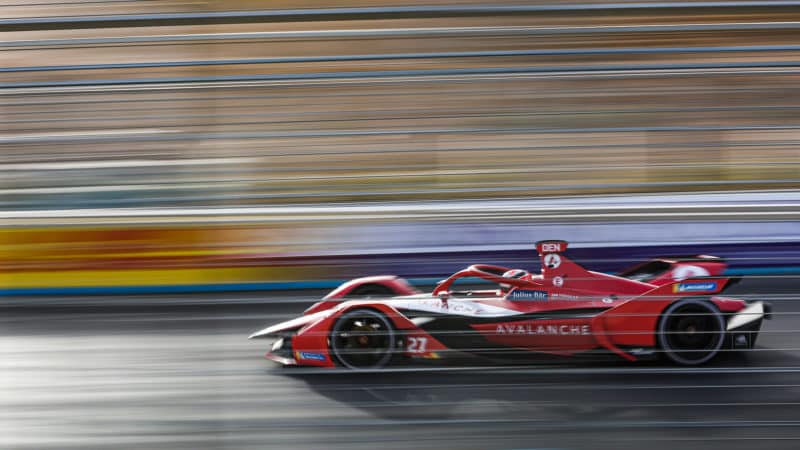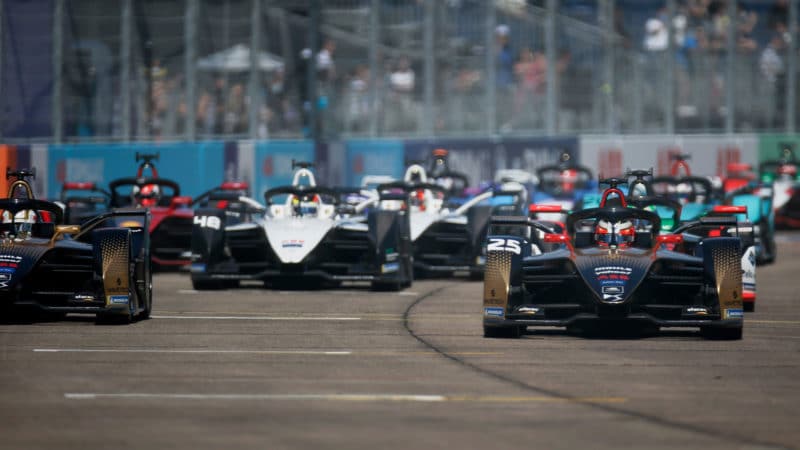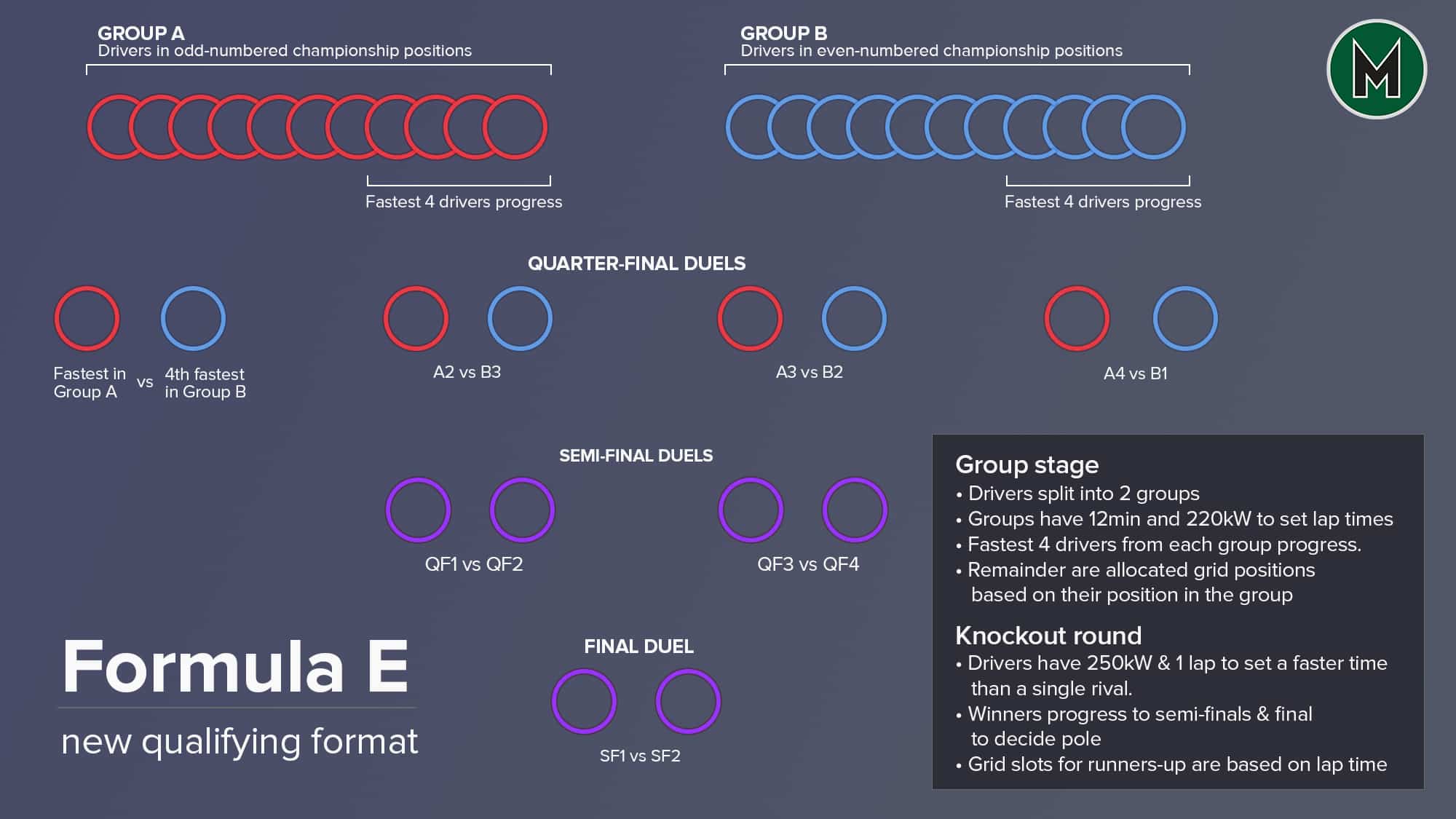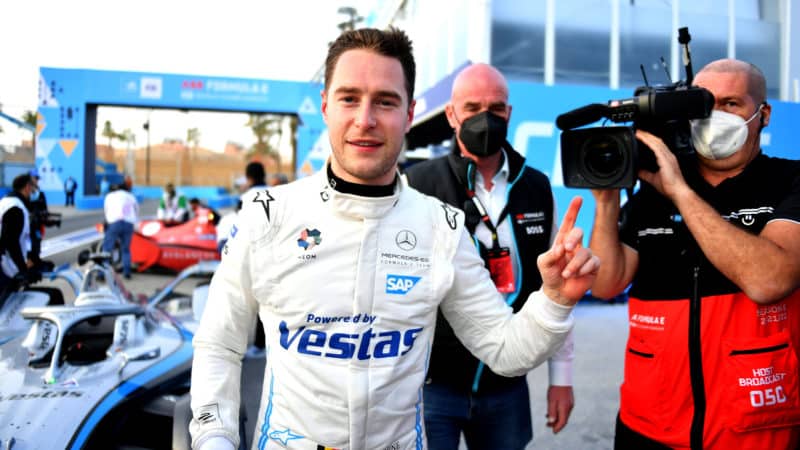A new qualifying format that actually works? Formula E's knockout hit
Motor racing's quest to find a fairer and more entertaining qualifying format is littered with spectacular failures. But Formula E's new series of duels could be a rare success, writes Hazel Southwell

Jake Dennis made it to the first final of Formula E's new qualifying format, but lost out to Stoffel Vandoorne
Antonin Vincent / DPPI
When 18 drivers arrived at Formula E’s final race weekend of 2021 with a chance of winning the title, something had to give.
A championship that goes to the wire is one thing: a season that can’t sort the great from the good is another. And the blame in this case was squarely pointed at qualifying.
The format often put the championship leaders at a disadvantage, which helped to keep the title fight open to as many drivers as possible. But it also made for a confusing, disjointed narrative where it would be hard for a casual viewer to work out who was doing well. Especially given FE’s big gaps between rounds.
And so Formula E radically reworked the format for 2022, doing away with the groups and super pole that had been there since its first round in 2014.
Instead, a split session followed by a knockout bracket with pairs of drivers was designed to try and make the process fairer, with championship leaders less ‘punished’ by group order.
Setting up a series of bitesize, high-adrenalin duels between the series’ leading drivers also promised more excitement than your average qualifying session.
After one weekend in Diriyah, it looks like – although complicated to explain – the new format has worked.

Last year, 18 drivers started the first race of the season’s final weekend with a chance of winning the title
Formula E
Ok, I’ve practised explaining this a few times now and I think I’ve got it down. So: for the seven seasons prior to 2022, Formula E used a qualifying format where drivers were split into four groups for short sessions where they were only allowed to set one full power (250kW, latterly) lap. Across all four groups, the fastest six drivers went forward into Super Pole to set a single, additional lap to decide the order of the first three rows on the grid.
That might not sound too controversial but it ended up being a major championship bugbear when a tweak in Season 4 meant groups were no longer decided by lottery but by championship points order, with the top runners always going out in group one.
Formula E races on dirty, dusty, high evolution street tracks and so sometimes group one would be disadvantaged by track conditions compared to groups three or four – like success ballast that made it more difficult for the fastest drivers to build a points cushion.
Last year showed that it was too effective at taking the championship to the wire and so last weekend, drivers were split into two groups (odd and even numbers based on their championship positions) and given 12-minute sessions where they can run as many laps as they want to set a good time. The top four from each group, regardless of their times relative to the other group, go through to the ‘duels’ stage.
That’s essentially an eight-car elimination bracket. Drivers from group A are paired with drivers from group B and whichever of each duo is fastest moves forward, from quarter to semi to final. The final two drivers know they’ve locked out the front row and compete against each other’s times to claim pole.
Phew. Before last weekend’s first running of the format there was a bit of cynicism (not least from me) that this might be overcomplicated and unsuitable for FE’s incredibly restrictive tyre allocations. Only running two hot laps in qualifying meant drivers had some chance of conserving rubber – of which they effectively only get two potential replacement tyres over a whole race day’s sessions.

Speaking to Venturi driver Lucas di Grassi before the weekend, he told me “the original reason we chose the old qualifying format was to increase the amount of people fighting for the title. So the purpose of the qualifying was achieved; we had, every season four, six, eight, ten drivers fighting for the title in the last race – for that purpose, qualifying was actually very, very effective.
“If you think about a more fair system, this system is more fair,” Di Grassi continued. “So we’re going from a system which the purpose of was to create more people fighting for the championship towards to a more fair system.”
The big question is: did that work? Mostly, yes. By and large, the fastest cars got through to the duels – an accident for Edoardo Mortara during the split session on the first race day meant some drivers were frustrated by a red flag but that will always be the case in any timed session. Formula 1 drivers face the same issue with a late-session accident and it is, unfortunately and to borrow a well-worn driver press conference phrase, what it is and it’s the same for everyone.
Importantly – and my biggest concern – was that you didn’t lose a sense of excitement during the rounds. Although explaining it feels unwieldy it’s actually very straightforward once there’s a bracket on screen and it’s clear to see which drivers are going head-to-head, so my worry that there’d be mass social media confusion was pretty much put to bed.
More than that, the incredibly close nature of the duels was genuinely exciting. Saturday’s pole came down to just five thousandths of a second, the kind of margins you want to see in any qualifying battle. Formula E, currently in a pretty desperate position to gain new audiences, needs something easily clippable that shows how close the racing is and both pole battles easily did that, showcasing the best of what the cars and drivers can do.

Stoffel Vandoorne celebrates his final win in Diriyah
Formula E
Some drivers who’d struggled to show pace in previous formats seemed to, in particular, profit from the change. André Lotterer, whose qualifying pace last season was at points almost bafflingly far from team-mate Pascal Wehrlein’s, for a very experienced and provenly quick driver, made it through to the duel stage for Porsche on both days.
He said the new format definitely makes it fairer, while still letting the variations of FE’s street tracks throw a curveball in teams’ plans. “We’re still going to experience different situations and scenarios depending on the temperature. Here you wanted to keep some temperature in the tyres.
“I think in Mexico, it will be the opposite, you want to have the tyres cold,” Lotterer explained. “So I think that if you’re in Group B and starting the duels with hot tyres in Mexico, there is a disadvantage, but at least you’re in the duels already – that’s a worst case P8. A track will have its specificity, and that will also bring a bit of randomness, I would say.”
Qualifying – 2022 Ad Diriyah ePrix
The duel stages could have turned into a dragged-out affair that lost momentum but the rapid knockout format kept the pace moving. Although it did also catch out DS Techeetah, on the second race day, who forgot to send Antonio Felix da Costa out in time to take the green light for his hot lap and ended up excluded from the session. That’s the sort of foible that comes from a new format though, and shows even the most successful team in the series ever maybe needs to remember its garage is a little further down the pit lane than it was previously, this year.
Any format change will take some adjustments, from teams and fans but this one, designed in cooperation with the Formula E drivers and particularly led by Jaguar’s Sam Bird, has so far proven a total success, despite moving well away from any previously tried-and-tested motorsport rules.
